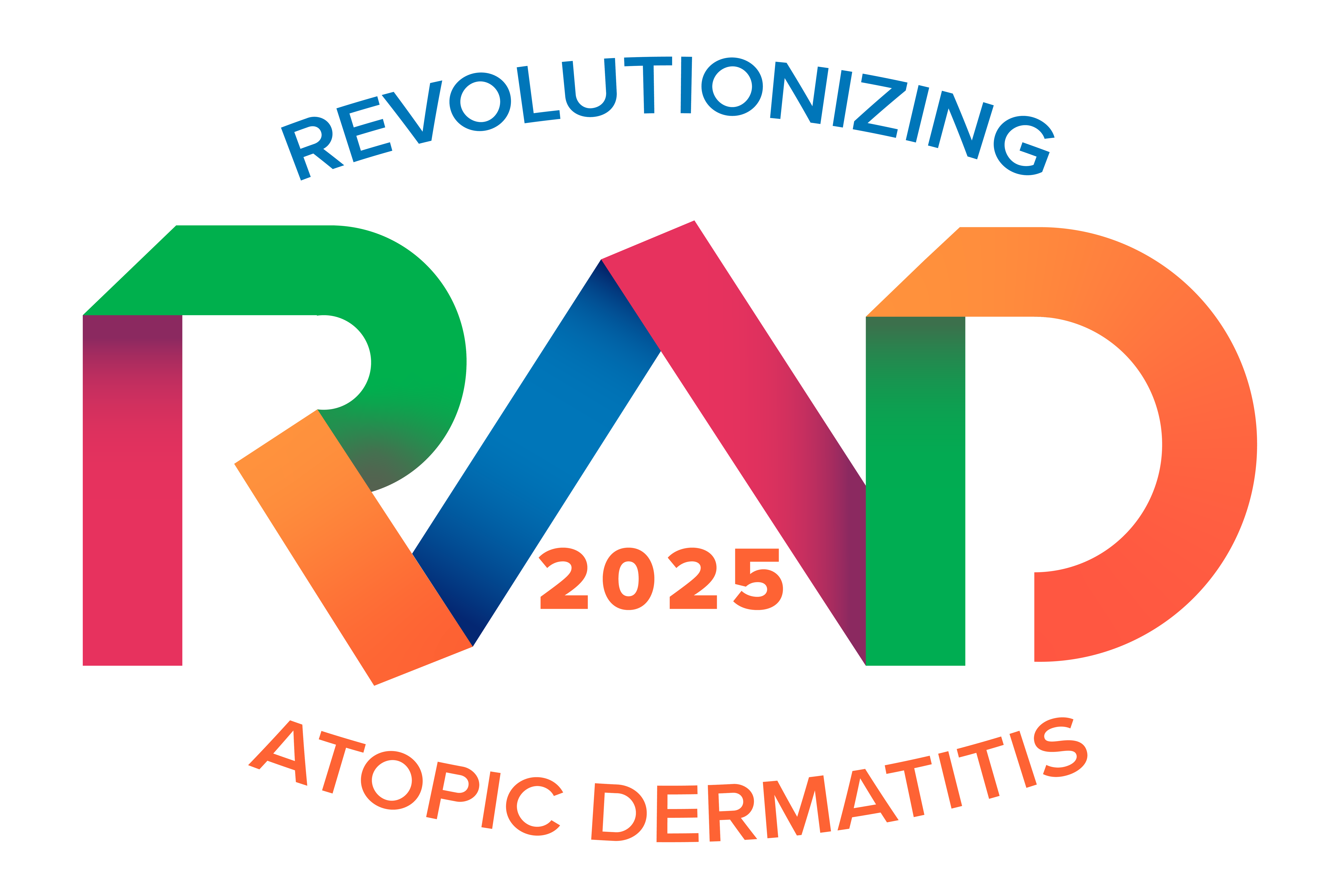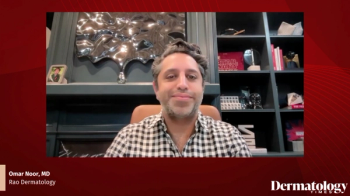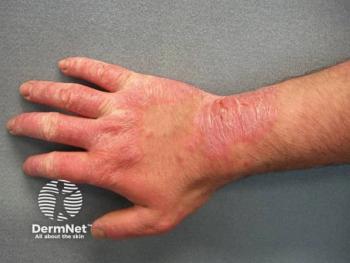
Q&A: Peter Lio, MD, on Safety in Pediatric AD Management and the Promise of Precision Medicine

Key Takeaways
- Personalized medicine in AD aims to match treatments to specific subtypes, enhancing efficacy and safety, though more research is needed to achieve this goal.
- Balancing safety concerns with biologics and corticosteroids is crucial, requiring careful risk-benefit analysis for each patient to optimize treatment outcomes.
Discover insights from Peter Lio, MD, on precision medicine in pediatric atopic dermatitis and the promising role of ruxolitinib at the RAD 2025 Conference.
Peter Lio, MD, a clinical assistant professor of dermatology and pediatrics at Northwestern University Feinberg School of Medicine and founding director of the Chicago Integrative Eczema Center, spoke to Dermatology Times about his session at the
Dermatology Times: What are your thoughts on personalized medicine in atopic dermatitis [AD]?
Lio: This personalized or precision medicine we're heading toward is so important. I think that we're not there yet, and some of the things have been a little disappointing. We were thinking that when the first biologics came out in 2017, maybe they would help us subtype, and the fancy term for this is a diagnosis ex juvantibus. You can make a diagnosis or understand what's happening by what helps. So we thought, for example, if you block IL-4 and [IL-]13, maybe that will only treat a certain type and...won't touch another type, and that'll help us separate. But it didn't work that way. So, we hadn't had a lot of insight into the phenotype differences, what they look like, or the endotypes, like biomarkers or molecular markers, yet, but I think we're getting close because it's starting to converge. There definitely are threads, but we’re waiting for someone to pull them together into a cohesive story that is then clinically actionable. It would be nice to know if you have subtype XYZ, but if it doesn't mean I could do anything...the best would be if I say, ‘You have this subtype, and this is the preferred treatment,’ both from an efficacy [standpoint], which is how we're usually thinking about it, but let's not forget about the safety as well. For example, if a treatment has the potential to cause conjunctivitis, allergic reaction, or arthritis, maybe I'll be able to say, “You shouldn't get this one because you have this particular subtype; you're more likely to develop this problem.” That holistic picture of meeting the patient's needs with exactly the right therapy [is] the promise of precision medicine. We're not there, but we are definitely dying to get there, and I think we're seeing the movement forward.
Dermatology Times: Were there any other notable takeaways from your presentation at RAD 2025?
Lio: We talked a little bit about how we can keep the safety aspects of medicines in perspective, [as well as] the analogy I sometimes use for patients who are really worried about, for example, a biologic, but [have] been on multiple courses of prednisone or prednisolone. I say it's kind of like you've been riding around on a motorcycle without your helmet, and now you're worried about going on this commercial airline. There really are risks to everything. I wish I could say there was no risk, [but] there are risks. Bad things can happen, but bad things can happen even if you're not on the medicine. Certainly, some medicines are more risky than others, so we have to make sure we're comparing apples to apples because people will say, “Well, I've been on prednisone a bunch of times, and nothing bad has happened.” I know, but it's like Russian roulette. It’s much more worrisome than some of these newer drugs. And we know that because a lot of the older medicines never had the kind of studies we have now. It's a very different standard...but the newer drugs have a really rigorous set. So it's, again, trying to compare it and keep it in perspective, [and] trying to balance the corticosteroid phobia. People are worried about topical steroids, and I am too. I'm very cautious with them. But sometimes people say, “I don't want to use them no matter what,” and that can be a loss for them, too, especially because some of the nonsteroidal agents [may not be] as strong, or I can't get them for the patient.... So we have to walk that tightrope. That's part of what I tried to convey in the talk. This is something we have to do for each patient.
Dermatology Times: What are your thoughts on the upcoming Prescription Drug User Fee Act date for ruxolitinib cream in pediatric patients aged 2 to 12 [years]?
Lio: We are always looking for new therapies. There are just so many unmet needs in this patient population. There's that old adage, “Every pot has a lid.” We're always looking for new lids to help meet people's needs. And with each new medication, that's important. So with topical ruxolitinib, a very powerful [Janus kinase] inhibitor medication, we're really needing that in younger patients. Arguably, it is one of the most powerful nonsteroidal medicines that we have in our armamentarium. Now, there are some trade-offs with that. It does have some potential safety issues. It has some limitations on body surface area, and even with chronic use, you're ideally going to use it in a noncontinuous fashion. You'll take little breaks. All that being said, it is a very powerful medicine that works very quickly for both inflammation and itch in these patients. So I'm very excited to have this for younger patients, because we know it hadn't been studied in the younger patients, and it's not approved, [so] we can't get it. But now we have the studies, and hopefully we're going to get the approval...because it really does look to be safe and effective from the studies in these patients down to 2 years of age. That will be really powerful for us.
Reference
1. Lio P. Pediatric AD: Patient, Provider, Caregiver Connection. Presented at: 2025 Revolutionizing Atopic Dermatitis Conference; June 6-7, 2025; Nashville, TN.
Newsletter
Like what you’re reading? Subscribe to Dermatology Times for weekly updates on therapies, innovations, and real-world practice tips.



















